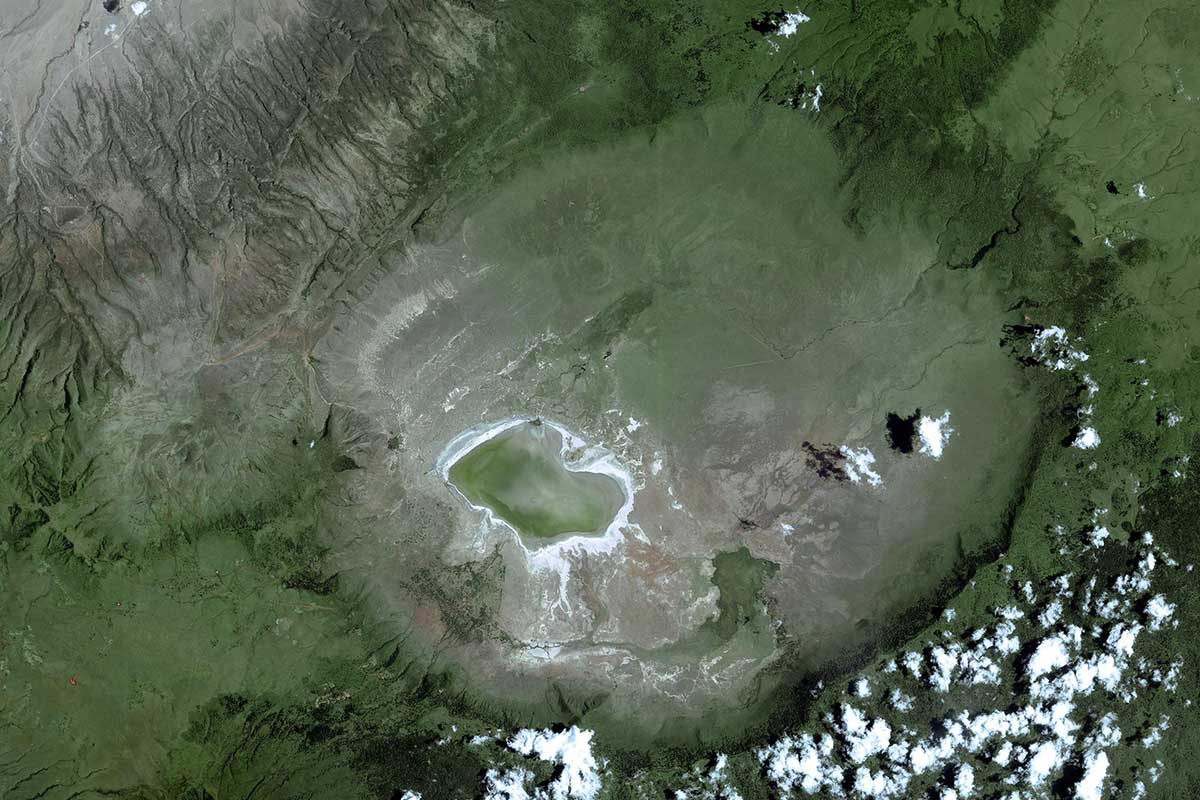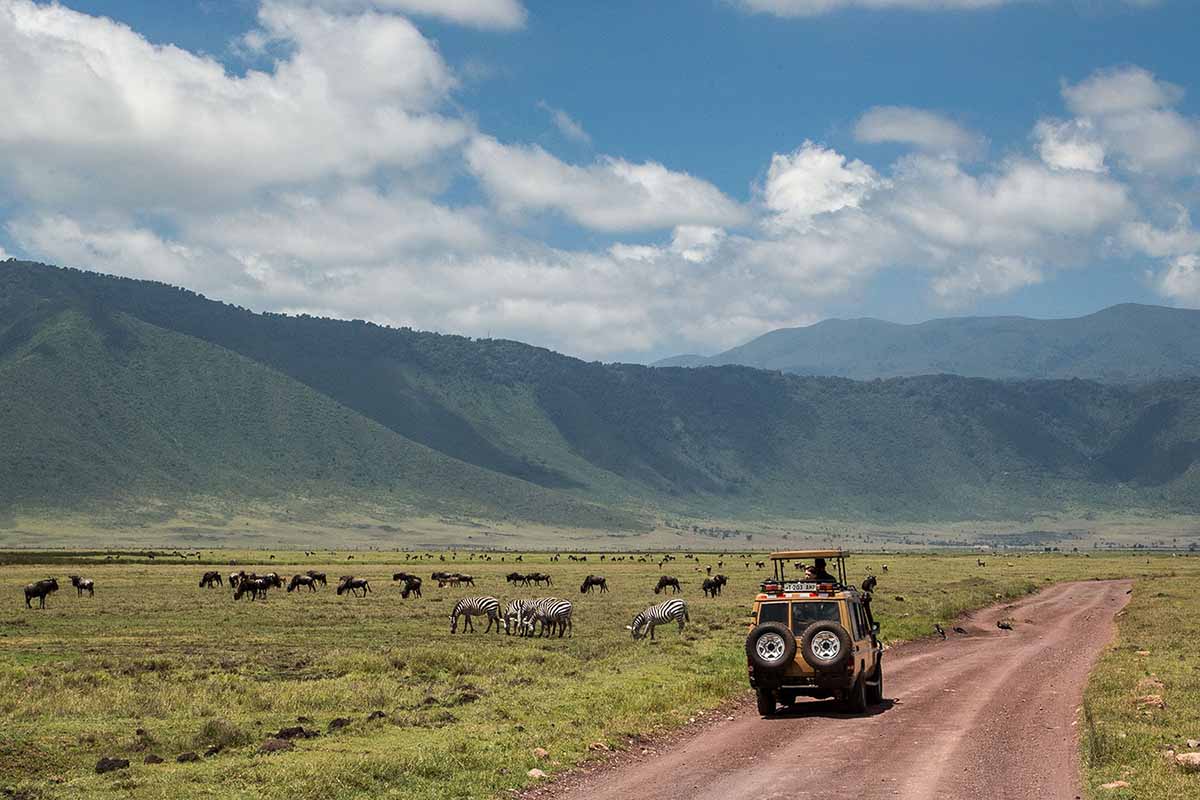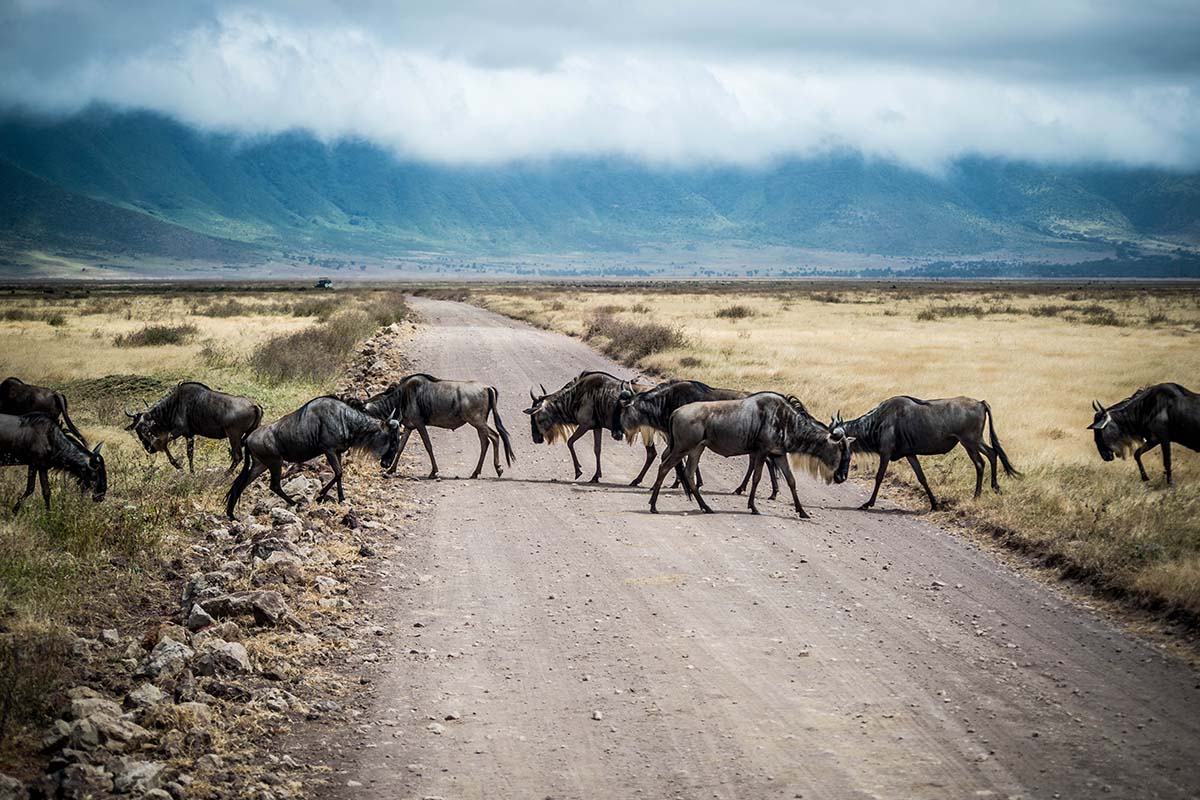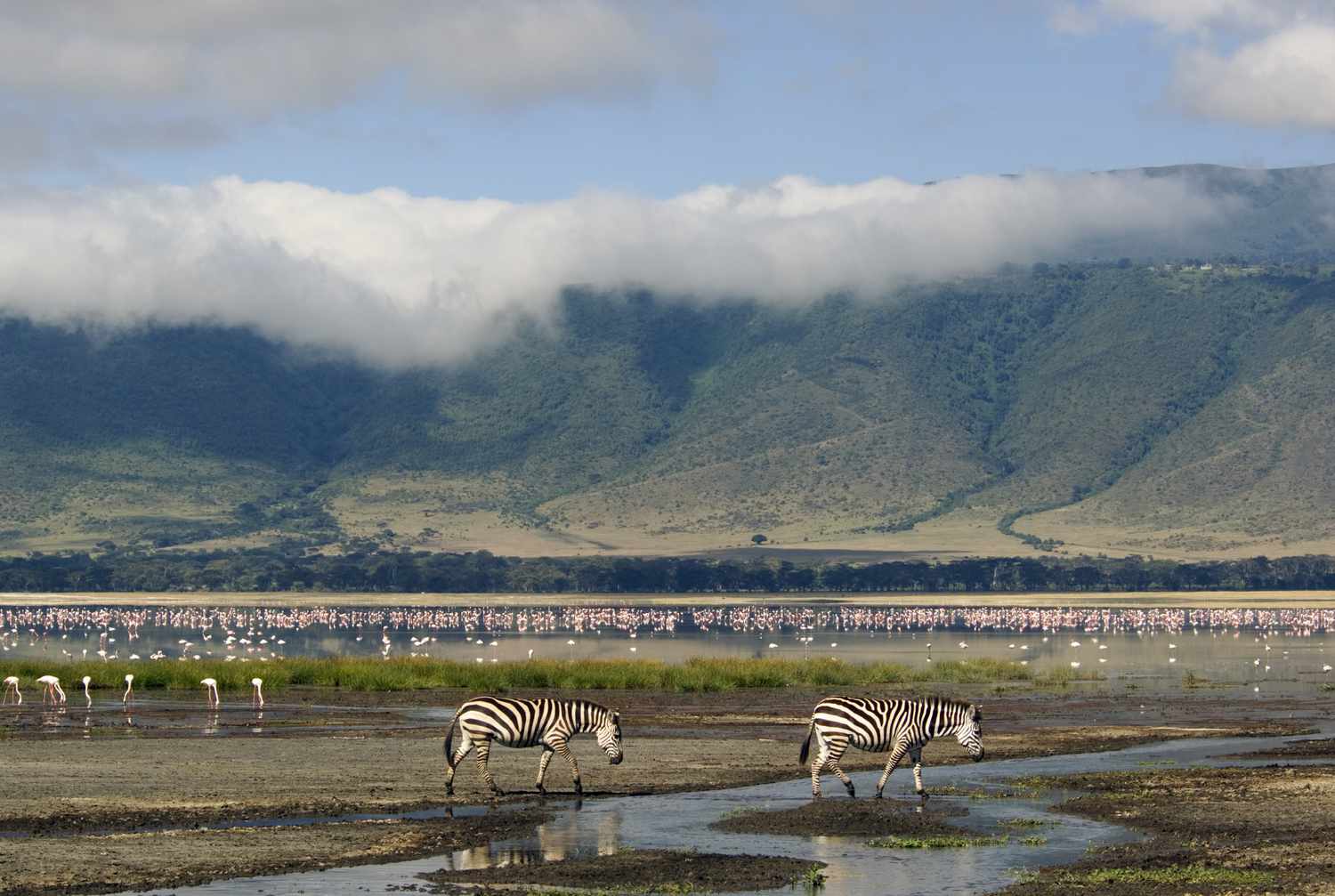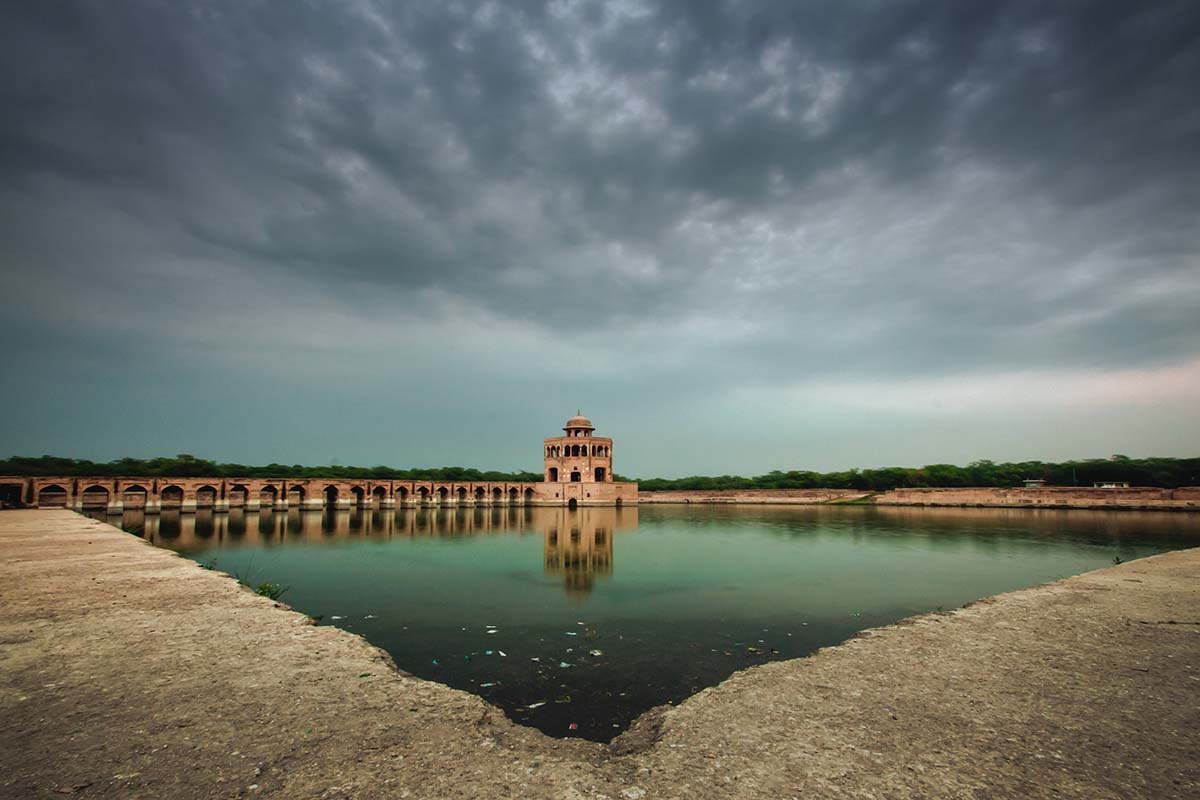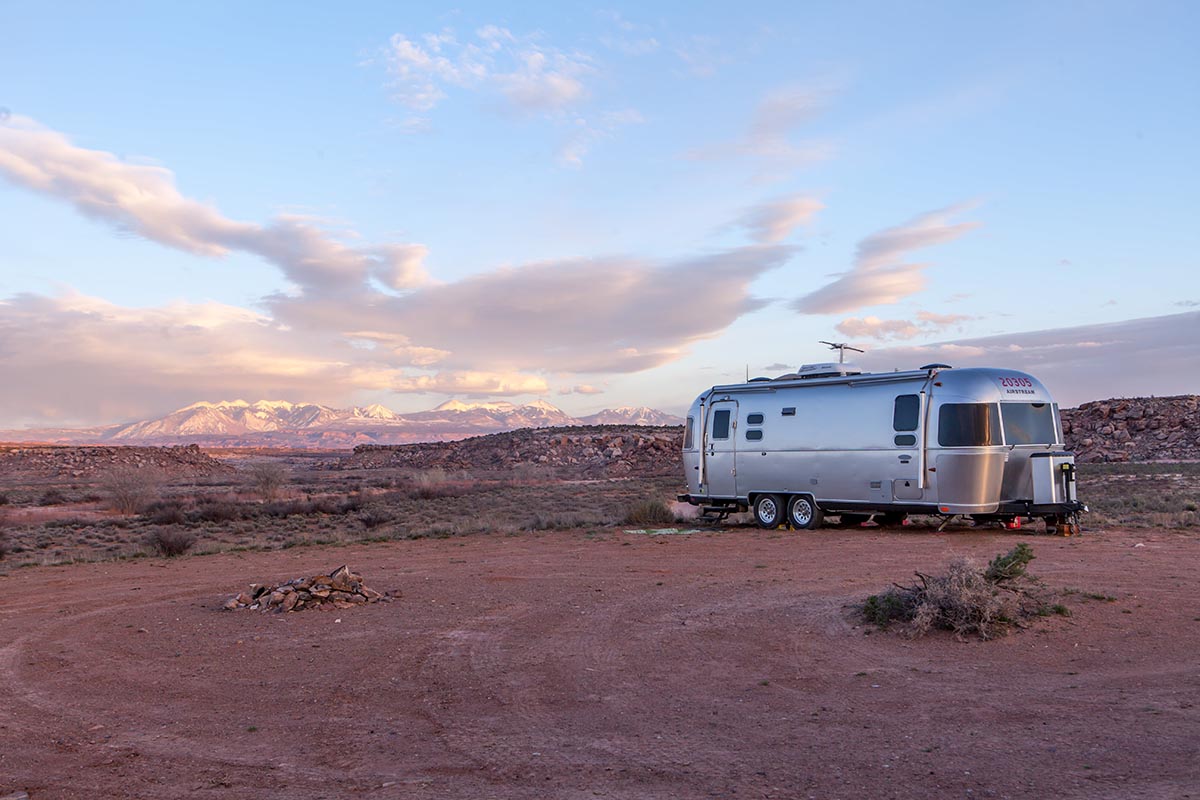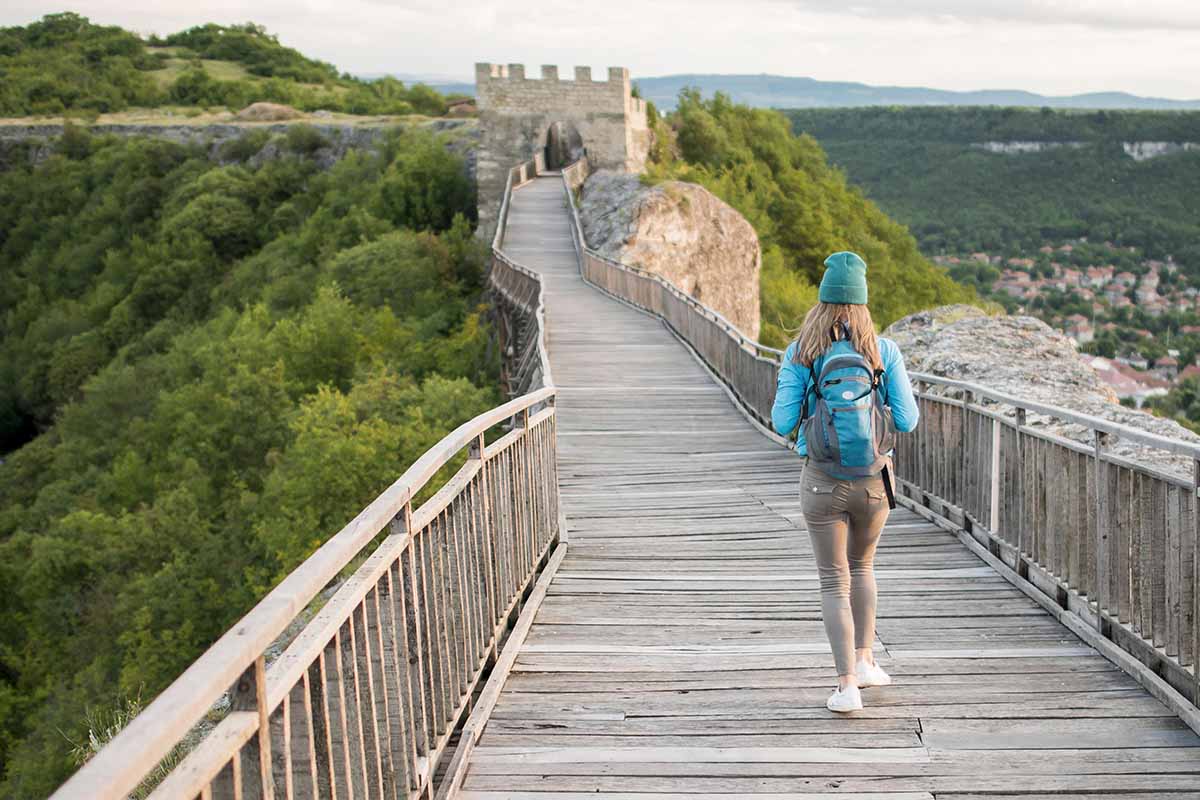Ngorongoro Crater is a spectacular place, unlike any other in the world, where you can enter an ancient volcanic caldera that today is teeming with wildlife.
These are just some of the Ngorongoro Crater facts that make this area a must-see for visitors to Tanzania: it is the largest intact volcanic caldera in the world, it is home to the largest number of animals per square foot, and is one of the only places where humans and lions can be seen peaceably walking together.
The Largest Inactive Volcanic Caldera in the World
To begin with, Ngorongoro is famous for being the world’s largest intact, unfilled volcanic caldera.
A caldera is formed as a result of a collapsed volcano (usually after an enormous eruption). Sometimes they can be filled by crater lakes, but in the case of Ngorongoro, the crater remains unfilled.
Being the largest intact crater in the world means that the previous volcano that stood in this place was also one of the largest volcanoes in the world. It is assumed that the volcano would have rivaled Mount Kilimanjaro as the highest mountain in Africa, were it still standing today.
An Internationally Recognized Site
Ngorongoro Crater was named a Unesco Heritage Site in 1979 and received the status of an International Biosphere Reserve in 1981. Ngorongoro has been called Africa’s Garden of Eden because of its intense concentration of wildlife in a ‘natural bowl’. The crater is home to over 30,000 animals in a space of 102 sq miles – the most densely populated area of wildlife in the world!
The rich soil here means plenty of year-round lush grass for ideal grazing. This results in not only large herds of grazing animals but their predators, as well.
The resident herds of zebra, gazelles, and wildebeests remain within the crater and do not migrate. There is also a large pride of lions that live within the crater.
In Ngorongoro Crater is it not uncommon to see wildebeests and zebras grazing beside sleeping lions. Why? Because the lions are so well-fed, they don’t constantly hunt as lions may do in other national parks throughout Tanzania.
For these reasons, Ngorongoro Crater is a recognized site of international importance for wildlife.
Habitat to all the big five animals
Ngorongoro Crater is the prime location to see all of Africa’s Big Five: Rhinos, Elephants, Lions, Cape Buffalo and Leopards
Ngorongoro Crater is the best place to see all of the Big Five as the world’s largest concentration of wildlife. You’ll likely see leopards in the neighboring Lerai forest, lions lounging throughout the grasslands of the crater, Cape Buffalo walking on the crater floor, and Rhinos and Elephants throughout your drive across the crater. If you’re short on time, Ngorongoro Crater is the best opportunity to see Africa’s Big Five most dangerous animals.
Ngorongoro Lions
Ngorongoro Crater is home to the largest pride of lions (per capita) in relation to the size of the crater. What does this mean for tourists? It means that the well-fed lions are flourishing in Ngorongoro Crater! Remember, there are also around 30,000 animals that reside in the crater, many of which are herbivores such as zebras, gazelles, and wildebeests – a lion’s favorite food.
Because the lions have a ‘buffet,’ you can see peaceful scenes of relaxed lion groups lounging in the shade, with zebras or wildebeests just beside them, unafraid because they know the lions won’t be hunting today. This is one of the only locations in Tanzania to get such amazing photography opportunities!
Endangered black rhinos
While Black Rhinos are endangered across Africa, Tanzania’s Black Rhinos have thrived within Ngorongoro Crater. Efforts for rhino repopulation have been successful in Tanzania, and the Frankfurt Zoological Society statistics show that some of the highest numbers of surviving rhinos living in the wild are within the crater walls.
It is common for safari-goers to see first-hand a Black Rhino meandering about on the crater floor.
The Ecosystems of Ngorongoro Crater
The walls of the Ngorongoro Crater are a staggering 2060 ft (630 meters) deep, with a diameter of only 20 km across. It is truly incredible to behold a birds-eye view of this fantastic caldera.
Visitors to the Crater will stop at the “View Point” to capture stunning photos of the entire crater from above before commencing the drive into the crater. Interestingly, the hole appears empty from this standpoint, despite tens of thousands of large mammals (not including birds!) moving about below.
Another unique feature of Ngorongoro Crater is that within this relatively small area are several distinct ecosystems: forests, swamps and seasonal lakes.
- Forest: As your Ngorongoro safari tours drives down into the crater, you will pass through the crater wall – a forested area. You’re sure to see monkeys, and if you’re lucky, a leopard in the forest, too!
- Swamps: At the Mandusi and Gorigor Swamps, you can likely spot hippos, elephants, and plenty of waterfowl, too.
- Grasslands: Most of the base of Ngorongoro Crater is extensive grasslands that offer to graze to zebras, wildebeests, gazelles, elands, ostriches, and their predators: lions and lurking hyenas.
Another unique ecosystem within Ngorongoro Crater is an alkaline late that attracts thousands of flamingos – Lake Magadi.
Lake Magadi
Within Ngorongoro Crater, a unique, seasonal soda lake attracts thousands of Lesser Flamingoes. Visitors in the rainy season, or shortly after the rains, can experience this 7-km long lake that means “Salty” in the local Maasai language. Some animals that live short a short while in this seasonal lake include hippos and any number of rare East African birds. During the dry season, this lake has been known to dry up completely, leaving only crystalized salt in the dry bed.
Home to resident Maasai
Incredibly, an estimated 100,000 humans are also living within the Ngorongoro Area. Almost all of them are members of the semi-nomadic Maasai tribe, traditional cattle herders who fearlessly graze cows near lion’s territory.
Because the animals live so comfortably and peacefully within the crater, the Maasai have kept their cows healthy and safe, despite the immense pride of lions in the vicinity.
This is one of the only places in the world where you can see human beings walking beside the wildlife of Africa; the Maasai continue to live in harmony with nature, as they have for centuries in this area.
How was Ngorongoro Crater created?
Ngorongoro Crater was created in the same manner as all calderas in the world: as the result of a volcanic eruption and the collapse of the existing cone. A giant, natural ‘bowl’ or crater remains on the earth.
It is believed that Ngorongoro Crater was formed over 2 million years ago from a volcano that may have been bigger than even Mount Kilimanjaro, the tallest mountain in Africa.
Ngorongoro Crater location
Ngorongoro Crater is located within the greater Ngorongoro Conservation Area. This wider conservation area borders Serengeti National Park and incorporates other exciting tourist sites such as Olduvai Gorge and Empakai Crater.
